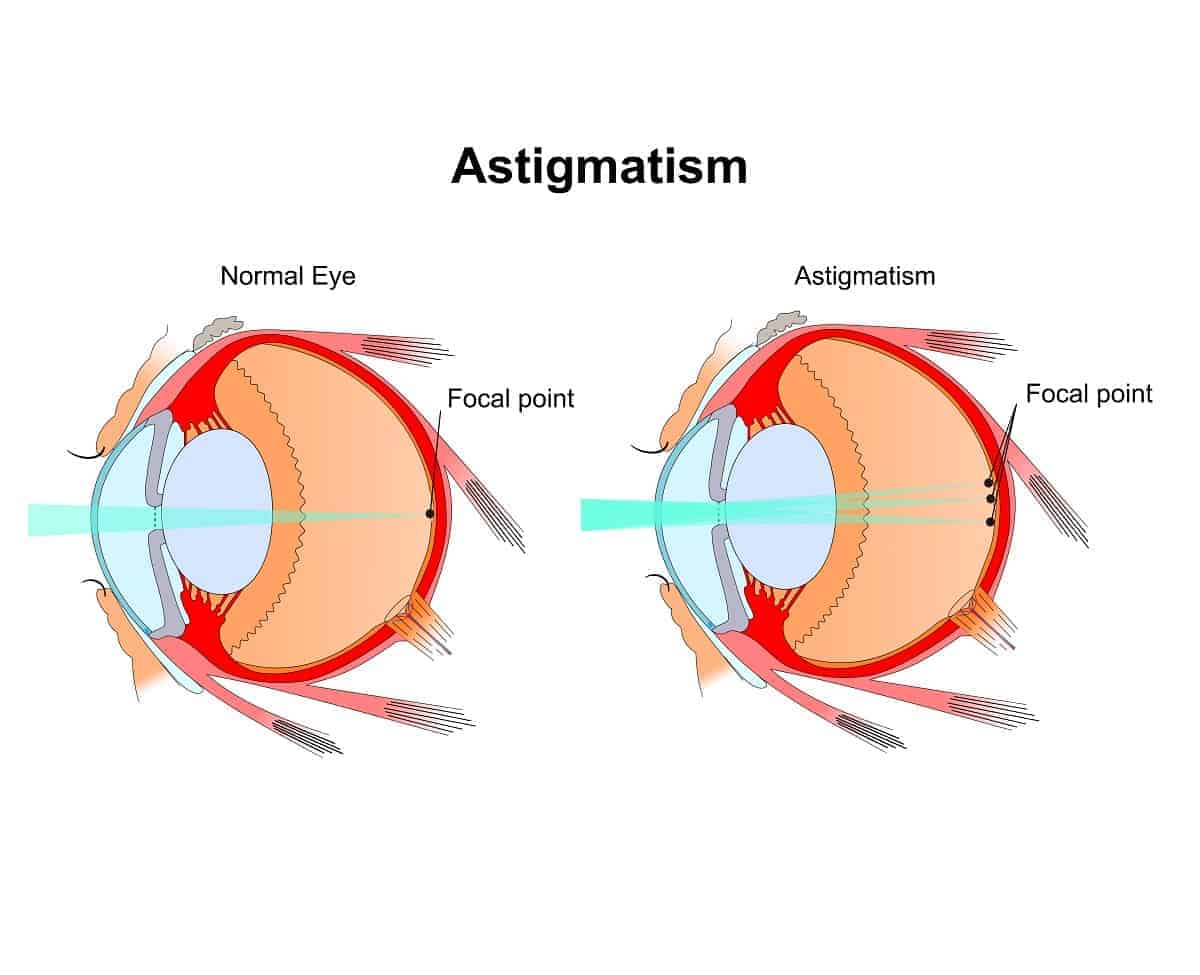 Astigmatism is a common refractive error that causes blurry vision at multiple distances. Like nearsightedness and farsightedness, astigmatism is characterized by an irregularly shaped cornea that prevents light from entering the eye and properly focusing onto the retina.
Astigmatism is a common refractive error that causes blurry vision at multiple distances. Like nearsightedness and farsightedness, astigmatism is characterized by an irregularly shaped cornea that prevents light from entering the eye and properly focusing onto the retina.
Austin Eye discusses the causes of astigmatism and how it’s treated.
What Causes Astigmatism
A normal cornea has a round shape, like a ping pong ball. Astigmatism occurs when the cornea has an oval shape, much like a football. This shape results in multiple points of focus in front of the retina and behind it, resulting in blurry vision at varying distances.
In most cases, people are born with astigmatism. While it is not known why exactly people are born with astigmatism, research shows that genetic factors may play a role. Other causes of astigmatism include eye injuries, complications from eye surgery, and conditions that affect the shape of the lens, such as keratoconus.
Treatment Options
Traditionally, astigmatism has been treated with prescription glasses and contact lenses. Eyeglasses are the least invasive and easiest way to correct astigmatism. Astigmatic individuals can choose from Toric lenses and gas permeable lenses. Toric lenses are soft lenses that have different powers in different meridians of the lens. They conform to the irregular shape of the cornea. Gas permeable lenses are rigid and retain their shape, forcing the cornea to change to a more regular shape.
Astigmatism can also be treated with laser vision correction procedures like LASIK and PRK. These procedures reshape the cornea to correct the refractive error and restore clear vision. Another procedure, called refractive lens exchange (RLE), can correct a specific form of astigmatism called lenticular astigmatism. During RLE, the natural lens is removed and replaced with an artificial intraocular lens (IOL).
If the astigmatism is caused by keratoconus, it can be treated with corneal crosslinking. Corneal crosslinking slows down the progression of keratoconus by strengthening the corneal tissue, preventing it from bulging further and worsening astigmatism.
To learn more information about astigmatism, including treatment options, schedule an appointment. Contact Austin Eye by calling our North office at (512) 250-2020 or our Central office at (512) 454-2020.







